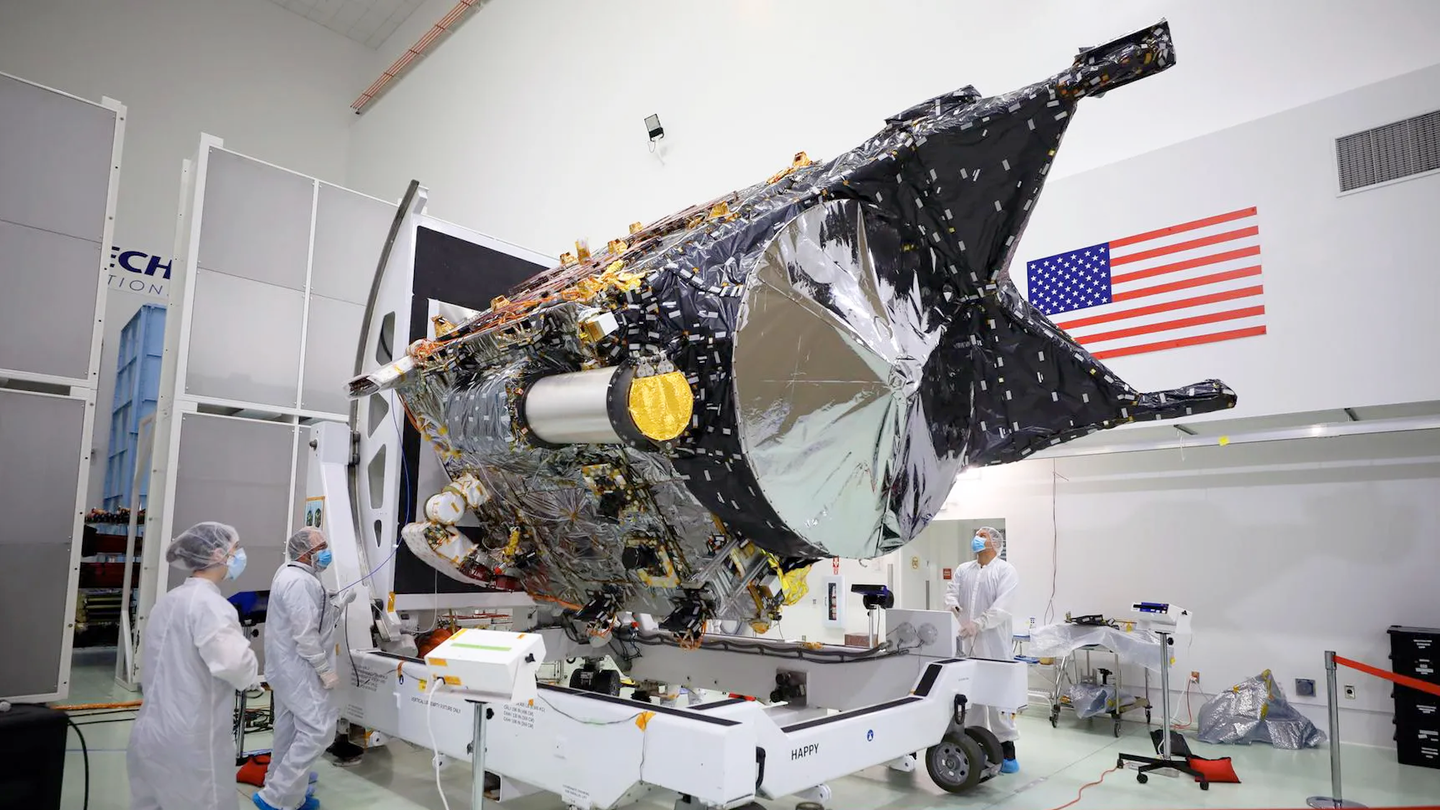NASA’s Psyche wins first deep space laser relay
The asteroid-bound spacecraft pulled off a ‘first light’ experiment only a few weeks into its 3.5 year journey.

Although NASA’s Psyche spacecraft is currently en route to its rendezvous with a unique, metal-heavy asteroid floating between Mars and Jupiter, it still has quite a while before it reaches its destination. But researchers aren’t waiting until the end of its 3.5 year, 280-million-mile journey to make the most of the project. Even after barely a month of spaceflight, Psyche is already achieving some impressive technological feats.
On November 16, NASA announced its Deep Space Optical Communications experiment aboard Psyche successfully achieved “first light” earlier this week, beaming a data-laden, near-infrared laser nearly 10 million miles back to Caltech’s Palomar Observatory. Additionally, DSOC operators were able to “close the link”—the vital process in which test data is simultaneously beamed through both uplink and downlink lasers. Although only the first of numerous test runs to come, it completes a necessary step within NASA’s ongoing plans to develop far more powerful communications tools for future space travel.
[Related: In its visit to Psyche, NASA hopes to glimpse the center of the Earth.]
Astronauts, ground crews, and private companies have all utilized radio wave frequencies for data transfers and communications since the late-1950’s, thanks to a global antenna array known as the Deep Space Network. As organizations like NASA aim to expand humanity’s presence beyond Earth in the coming decades, they’ll need to move away from radio systems to alternatives like infrared lasers. Not only are such lasers more cost efficient, but they are also capable of storing and transmitting far more information within their shorter wavelengths. Further along in DSOC’s development, for example, will hopefully accomplish data transmission rates between 10-to-100 times greater than today’s spacecraft radio systems.
“Achieving first light is one of many critical DSOC milestones in the coming months, paving the way toward higher-data-rate communications capable of sending scientific information, high-definition imagery, and streaming video in support of humanity’s next giant leap: sending humans to Mars,” Trudy Kortes, NASA’s director of Technology Demonstrations, said in Thursday’s announcement.
NASA also noted that, while similar infrared communications has been successfully achieved in low Earth orbit as well as to-and-from the moon, this week’s DSOC milestone marks the first test through deep space. This is more difficult thanks to the comparatively vast, growing distance between Earth and Psyche. During the November 14 test, data took roughly 50 seconds to travel from the spacecraft to researchers in California. At its farthest distance from home, Psyche’s data-encoded photons will take around 20 minutes to relay. That’s more than enough time for both Earth and Psyche to drift further along their own respective cosmic paths, so laser arrays on the craft and at NASA will need to adjust for the changes. Future testing will ensure the terrestrial and deep space tech is up to the task.
[Related: NASA’s mission to a weird metal asteroid has blasted off.]
Once it becomes the new norm, Jason Mitchell, director of the Advanced Communications and Navigation Technologies Division within NASA’s Space Communications and Navigation (SCaN) program, believes optical lasers will offer a “boon” for researchers’ space missions data collection, and will help enable future deep space exploration.
“More data means more discoveries,” Mitchell said in NASA’s announcement.
